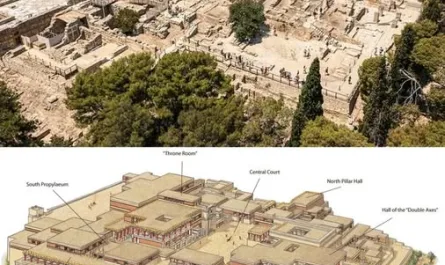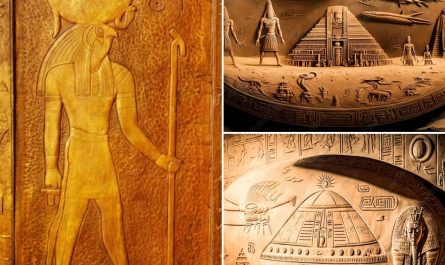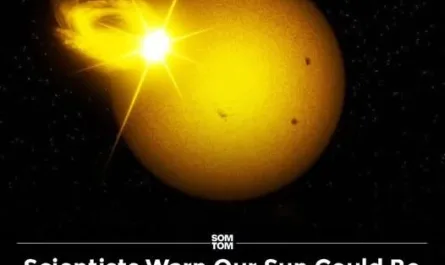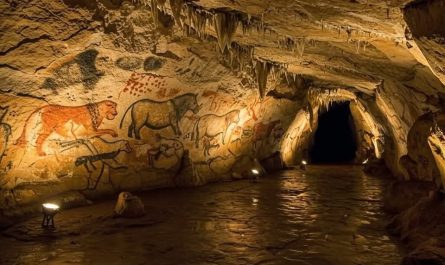The image before us is a stark and somewhat haunting tableau, a glimpse into the unforgiving yet fascinating processes of the natural world. It depicts the skeletal remains of a deer, seemingly suspended in a narrow, rocky chasm. The skull, adorned with the remnants of antlers, faces upwards, while a significant portion of the spinal column extends downwards into the darkness of the crevice.
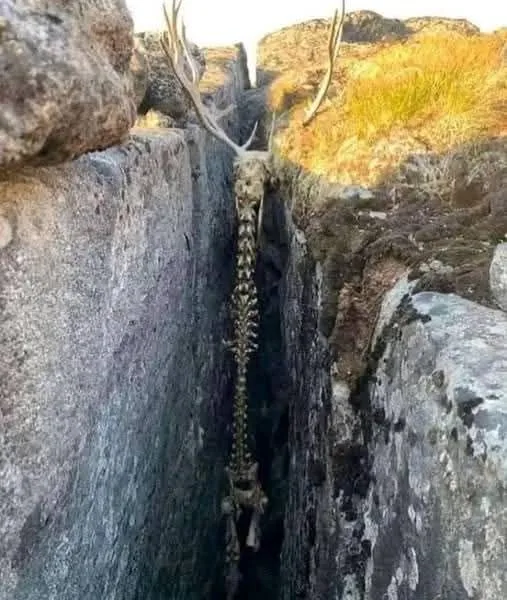
This isn’t a scene from a horror movie, nor is it likely evidence of some grand mystery. Instead, it’s a powerful, albeit sobering, illustration of the natural cycle of life and death, and the unexpected ways in which the remains of living creatures can be preserved and presented by the environment.
A Fatal Misstep:
The most probable scenario behind this scene is a tragic accident. Deer, while agile in their natural habitats, can sometimes misjudge their footing or be pursued into precarious situations. This particular deer likely stumbled or fell into this narrow fissure between the rocks. Once trapped, the confines of the crevice would have made escape virtually impossible.
The Slow Process of Decomposition:
Over time, as with all organic matter, the soft tissues of the deer’s body would have begun to decompose. This natural process, aided by scavengers that could reach parts of the carcass, insects, and the elements, would have gradually stripped away the flesh, fur, and other perishable materials.
The Skeleton Remains:
What remains is the deer’s skeleton – the hard, bony framework that once supported its life. The skull, with its distinctive antlers (or what’s left of them), is often the most recognizable part. The spinal column, a complex structure of vertebrae, articulates downwards, tracing the length of the animal’s body.
Caught in Time and Stone:
The narrowness of the crevice has played a crucial role in the way these remains are presented. The bones have become lodged and supported by the surrounding rock, preventing them from scattering or being entirely consumed by scavengers or the elements. The stone walls of the fissure act almost like a natural display case, holding the skeleton in this vertical, suspended position.
A Memento Mori in Nature:
This image serves as a potent memento mori, a reminder of our own mortality and the cyclical nature of life. It underscores the fact that even creatures as graceful and powerful as deer are subject to the vagaries of the natural world and the inevitability of death.
No Grand Mystery, Just Nature’s Course:
While the image might initially evoke a sense of mystery, there is no indication of anything supernatural or deliberately staged. It is simply a consequence of a natural accident and the subsequent decomposition process within a unique geological setting.
Observing the Unseen:
This photograph offers us a rare glimpse into a process that often occurs out of sight. We rarely encounter such complete skeletal remains displayed in this manner. It allows us to contemplate the forces at play in the environment, the challenges faced by wildlife, and the eventual return of all living things to the earth.
In conclusion, the image of the deer skeleton in the crevice is a powerful, if somber, reminder of the natural world’s processes. It’s a testament to the unforgiving beauty of nature, where life and death are intertwined, and where even in demise, there is a stark and compelling story to be told.


